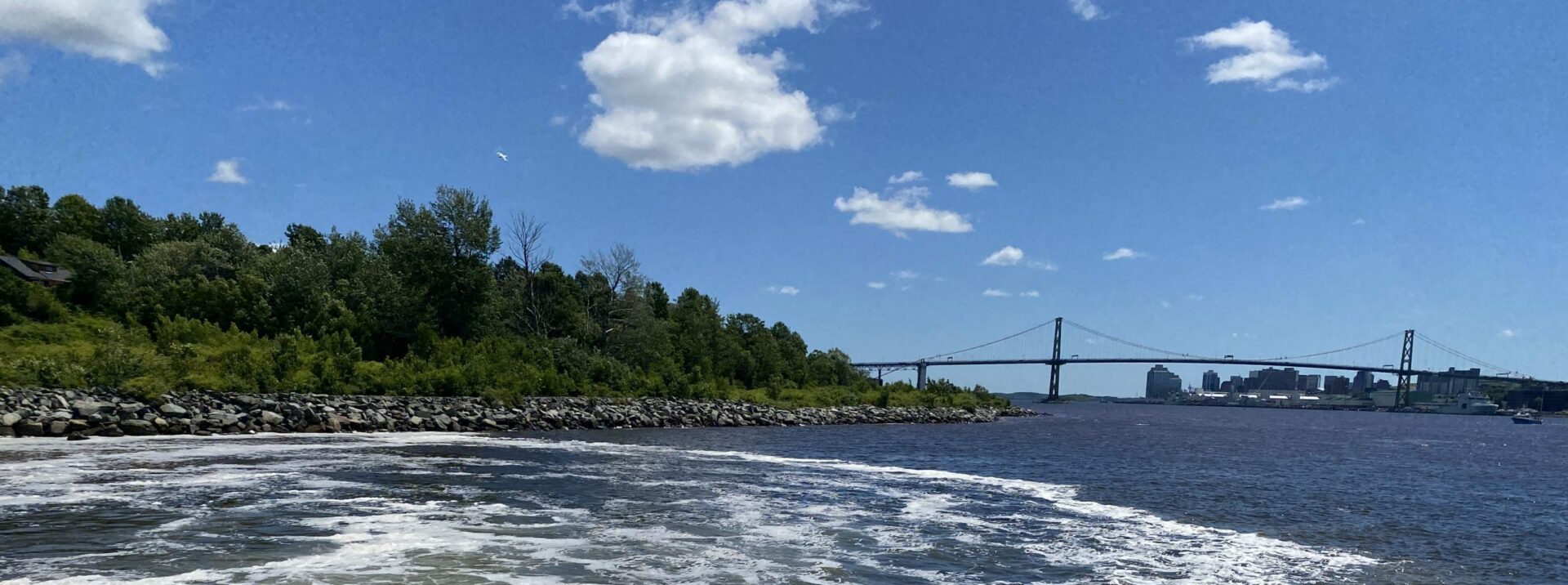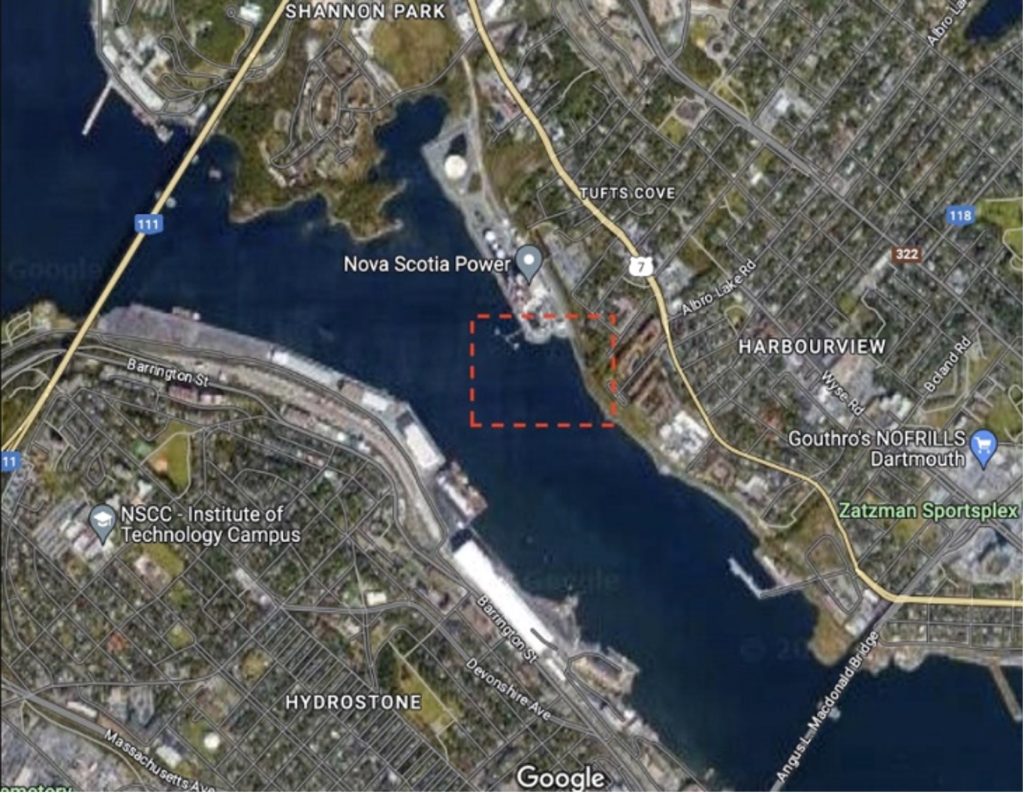
To occur the week of September 11th, 2023 (Addition currently scheduled for September 12th)
Overview
Planetary Technologies and independent researchers from Dalhousie University’s Oceanography Department, together with other partners, are collaborating on investigating the efficacy of ocean alkalinity enhancement (OAE) as a method to remove CO2 from the atmosphere.
Last month, Dalhousie University shared with you that a dye tracer was added to the water on August 10th, through the cooling water outfall of Nova Scotia Power’s Tufts Cove Generating Station, in the Halifax Harbour. Researchers were able to successfully map how water moves and disperses away from the station’s cooling water outfall.
The next step in the investigation is to begin testing the impact of alkalinity addition to these waters by Planetary Technologies, with dye and the first small volume of alkalinity addition to take place on September 12th. Scientists will track the alkalinity changes in seawater in the patch of dye that will be released at the same time.
This bulletin explains this study further and provides key information about the process.

Key Information
Who: Planetary Technologies, a Dartmouth, Nova Scotia-based venture whose mission is to enhance the ocean’s natural ability to take up and store CO2 through carbon dioxide removal and storage.
Researchers from Dalhousie University’s Department of Oceanography are collaborating with Planetary Technologies to provide independent analysis and development of methods for modelling, monitoring, reporting, and verifying the outcomes of Planetary Technology’s ocean alkalinity enhancement field tests.
Why: To help researchers the potential for ocean alkalinity enhancement to safely store atmospheric CO2, a small-scale field trial of alkalinity addition will be conducted.
Where: Nova Scotia Power’s Tufts Cove Generation Station in the Halifax Harbour (see Figure 1).
When: September 12th (subject to change depending on the weather), with further additions planned through the fall.
What: A field trial of alkalinity addition will be conducted.
- The trial will also help researchers better understand local water circulation and dispersion, and it will test measurement/modeling techniques.
- The source of the alkalinity in this trial is magnesium hydroxide, which can be used to make the ocean less acidic. This has been selected because of its high efficiency at sequestering carbon dioxide from the air, and its ecological safety in laboratory trials.
- The concentration of the alkalinity will be released at 36.5mg/litre.
- Dalhousie has done extensive modeling work to simulate where alkalized water will move and how quickly it will disperse. Based on those predictions, an alkalinity concentration was chosen that is just enough to be detectable and remains well below the known safe limit for fish, which is over 1,000 mg/L.
- If the alkalinity is dispersing too quickly to measure its effects on CO₂, researchers will carefully and stepwise increase the dosing.
- The alkaline material has undergone tests by Planetary Technologies for purity to ensure safety.
- Planetary Technologies will start with 5 tonnes per day and may increase the daily amount in later weeks. The total addition will not exceed 300 tonnes (may even be much less).
- By comparison, approximately 320,000 tonnes of salt are added to the streets of the Halifax area each year during the winter to help with road safety.
- The alkalinity will be released with a dye tracer (Rhodamine WT) to help researchers track the plume in the harbor and make measurement easier.
- Rhodamine WT is a fluorescent dye used extensively in natural water bodies, with well-known safety criteria. It is a water-soluble dye that has been used extensively for 50 years to study dispersion and flow within water systems and natural water bodies, including rivers, streams, lakes, groundwater, estuaries, and the open ocean, and is recommended by the Government of Canada to observe water dispersion.
- The concentration entering Halifax Harbour will be ~800 ug/L and will not exceed the maximum acceptable concentration quality standard (MAC-QS = 910 μg/L). The concentration will decrease rapidly away from the addition point and after the release ends.
- A news story regarding the previous dye addition can be found here.
- Planetary Technologies’ addition of alkalinity is being pursued in consultation with all applicable regulatory bodies, under existing permits held by Nova Scotia Power.
- The magnesium hydroxide being used has been tested for purity and to ensure safety.
What citizens may see: A distinct, milky red/orange/purple colour will be visible in the vicinity of the release point for no more than 24 hours after the dye release ends. Citizens will also see increased boat and drone activity in the Tufts Cove vicinity as Planetary Technologies adds the alkalinity and Dalhousie researchers measure the impact and the spread in the harbour. Information about the previous dye-only addition can be found here.
Where to make enquiries or receive additional information:
Email NovaScotia_project@planetarytech.com or visit www.planetarytech.com/projects/nova-scotia/.
